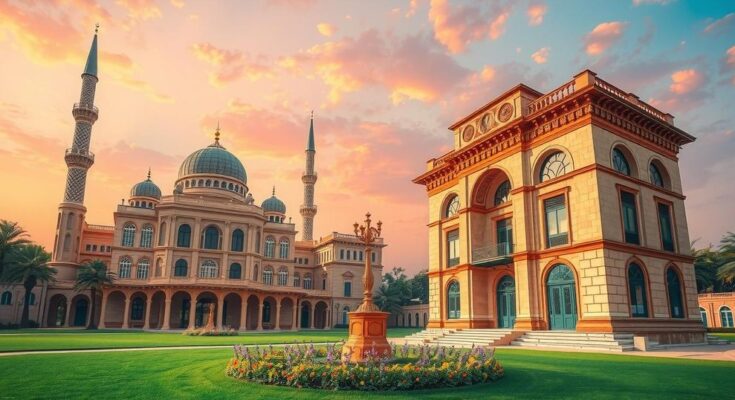Saudi Arabia’s real estate loans surged by 15.12% to SR883.3 billion ($235.54 billion) by 2024 due to increased corporate and retail borrower demand. The Kingdom’s market shows growing institutional investment confidence and diversification strategies. However, soaring property prices raise affordability concerns, emphasizing innovative financing needs. The Ministry of Housing’s integrated approach aids swift property transactions, reflecting the evolving dynamics of the sector under Vision 2030.
Saudi Arabia’s real estate sector witnessed significant growth, reporting a record high of SR883.3 billion ($235.54 billion) in real estate loans by the close of 2024, marking a 15.12 percent increase year-over-year. This growth stemmed from both retail and corporate demands, with corporate loans elevating by 26.23 percent, totaling SR202.04 billion. Individuals constituted the majority at 77.13 percent of total real estate financing, increasing by 12.19 percent to SR681.24 billion.
Real estate lending now accounts for approximately 30 percent of the overall bank loans in Saudi Arabia, which have reached SR2.96 trillion as of the end of 2024. This trend demonstrates rising confidence in the market, supported by institutional investments that spur the development of upscale commercial areas and integrated residential projects, integral to the Kingdom’s economic diversification plans.
Elias Abou Samra, CEO of Rafal Real Estate, remarked on the market’s sophistication due to increased involvement of local and international investors who prioritize stable, long-term investments. He noted that while retail buyers remain significant, corporate entities are now more engaged in substantial mixed-use projects, leveraging favorable financing conditions.
Abou Samra highlighted ongoing investments in landmark projects like Sports Boulevard and King Salman Park, which are attracting international interest. He elaborated that recent developers have emerged, focusing on smaller, low-rise projects primarily funded through sales rather than corporate loans, with a shift towards mixed-use developments necessitating greater debt financing.
The partnership between real estate firms and Saudi banks has streamlined property acquisition through a comprehensive model established by the Ministry of Housing, which spans planning, financing, and sales processes. This cohesive structure promotes promptness and compliance with regulatory standards, accelerating project completions and facilitating financing for real estate companies like RAFAL.
As part of this initiative, RAFAL has integrated operational approaches with the National Housing Co., resulting in increased efficiency and responsiveness to market demands for well-regulated residential and mixed-use developments. The rapid absorption of units—3,600 apartments sold in four months—exemplifies the effectiveness of this granted financing flexibility.
However, a report from Knight Frank revealed considerable price pressures in the Saudi real estate sector, exacerbated by escalating demand in urban centers, particularly Riyadh and Jeddah. This surge leads to skyrocketing prices that challenge property affordability for typical buyers, necessitating innovative monetary policies to ensure sustainable market growth.
Abou Samra noted a discrepancy forming between Riyadh and other cities, with the capital showing signs of over-extraction of resources. As demand shifts toward modern apartments to cater to a youthful demographic and expatriates, there exists a heightened interest in buy-to-let units, offering significant rental yields far exceeding many global cities.
The Saudi Arabian financial environment parallels the US, with recent interest rate cuts reducing borrowing costs, enhancing real estate financing access. Despite anticipated sustained interest levels around 4 percent, adaptable local financing strategies have been implemented to mitigate cost impacts on projects. Provisions such as installment payments and regulated off-plan sales help maintain reasonable pricing amidst the inflationary pressure.
In conclusion, the Saudi real estate market is experiencing robust growth, evidenced by increased financing and heightened interest in corporate investments. This evolution fosters a more diverse and stable real estate environment, significantly influenced by government initiatives and strategic partnerships. However, the soaring property prices pose affordability challenges, calling for innovative financing and policy interventions to maintain accessibility for average buyers. The broader implications of these trends highlight a shift towards modern living options, reinforcing the need for adaptive solutions in response to a dynamic market landscape.
Original Source: www.arabnews.com




